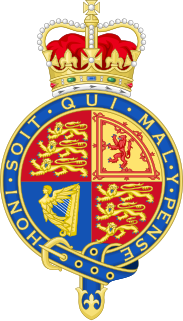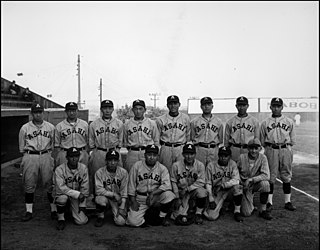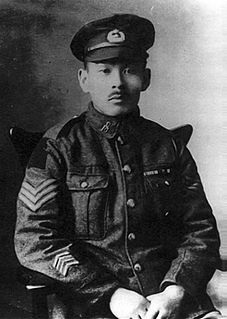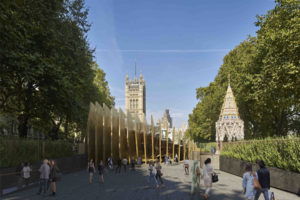Sansei is a Japanese and North American English term used in parts of the world such as South America and North America to specify the children of children born to ethnic Japanese in a new country of residence. The nisei are considered the second generation; grandchildren of the Japanese-born immigrants are called Sansei; and the fourth generation yonsei. The children of at least one nisei parent are called Sansei. Sansei are usually the first generation of whom a high percentage are mixed race, since their parents were usually born and raised in America themselves.

Burnaby is a city in British Columbia, Canada, part of Metro Vancouver and immediately to the east of the City of Vancouver. It is the third-largest city in British Columbia by population, following Vancouver and nearby Surrey. Burnaby was incorporated in 1892 and achieved its city status in 1992, 100 years after incorporation. It is the seat of Metro Vancouver's regional government.

The Pacific National Exhibition (PNE) is a nonprofit organization which hosts an annual 17-day summer fair, seasonal amusement park, and arena in Vancouver, British Columbia, Canada. It usually begins in mid-to-late August, and ends in early September, usually Labour Day.

Hope is a commuter town and district municipality at the confluence of the Fraser and Coquihalla rivers in the province of British Columbia, Canada. Hope is at the eastern end of both the Fraser Valley and the Lower Mainland region, and is at the southern end of the Fraser Canyon. To the east over the Cascade Mountains is the Interior region, beginning with the Similkameen Country on the farther side of the Allison Pass in Manning Park. Located 154 kilometres (96 mi) east of Vancouver, Hope is at the southern terminus of the Coquihalla Highway and the western terminus of the Crowsnest Highway, locally known as the Hope-Princeton, where they merge with the Trans-Canada Highway. Hope is at the eastern terminus of Highway 7. As it lies at the eastern end of the Fraser Valley in the windward Cascade foothills, the town gets very high amounts of rain and cloud cover – particularly throughout the autumn and winter.

In 1942, internment of Japanese Canadians occurred when over 22,000 Japanese Canadians, comprising over 90 percent of the total Japanese Canadian population, from British Columbia were forcibly relocated and interned in the name of national security. The majority were Canadian citizens by birth. This decision followed the events of the Japanese invasions of British Hong Kong and Malaya, the attack on Pearl Harbor in Hawaii, and the subsequent Canadian declaration of war on Japan during World War II. This forced relocation subjected many Japanese Canadians to government-enforced curfews and interrogations, job and property losses, and forced repatriation to Japan.

Steveston, founded in the 1880s, is a suburb of Richmond in Metro Vancouver. On the southwest tip of Lulu Island, the village is a historic port and salmon canning centre at the mouth of the South Arm of the Fraser River. The early 1900s style architecture attracts both the film and tourism industries.
Raymond Moriyama is a Canadian architect of Japanese descent. In 1970, Moriyama co-founded a private practice in Toronto with Ted Teshima called Moriyama & Teshima Architects which is renowned for designing many major buildings across the world, including the Canadian War Museum and the Canadian Embassy in Tokyo. His focus is on humane architecture with the pursuit of true ideals, democracy, and unanimity of all people.

New Denver is at the mouth of Carpenter Creek, on the east shore of Slocan Lake, in the West Kootenay region of southeastern British Columbia. The village is 47 kilometres (29 mi) west of Kaslo on Highway 31A, and 47 kilometres (29 mi) southeast of Nakusp and 32 kilometres (20 mi) northeast of Slocan on Highway 6.

Cunningham v Homma, is a decision of the Judicial Committee of the Privy Council that upheld a British Columbia law that prohibited Japanese Canadians and Chinese Canadians from voting.

The Japanese American National Museum is located in Los Angeles, California, and dedicated to preserving the history and culture of Japanese Americans. Founded in 1992, it is located in the Little Tokyo area near downtown. The museum is an affiliate within the Smithsonian Affiliations program.
Japanese Canadians are Canadian citizens of Japanese ancestry. Japanese Canadians are mostly concentrated in Western Canada, especially in the province of British Columbia, which hosts the largest Japanese community in the country with the majority of them living in and around Vancouver. In 2016, there were 121,485 Japanese Canadians throughout Canada.

Nisei is a Japanese language term used in countries in North America and South America to specify the ethnically Japanese children born in the new country to Japanese-born immigrants. The Nisei are considered the second generation, and the grandchildren of the Japanese-born immigrants are called Sansei, or third generation.

Sunshine Valley, formerly named Tashme, is an unincorporated community consisting of cabins, tiny homes, and RV parks on the Crowsnest Highway between of the town of Hope (NW) and the entrance to Manning Park in the Cascade Mountains of British Columbia. The community has its own volunteer fire department (SVVFD), recreation centre, heated outdoor pool, and playground. As of 2016, the population of Sunshine Valley is 177.

The Asahi was a Japanese-Canadian baseball team established in 1914. The team went on to great success, particularly in the 1930s, winning numerous tournaments and championships. The team was based in Vancouver's Oppenheimer Park, in the city's Japantown. Matsujiro Miyazaki, a Powell Street shop owner, was the Asahis' first coach and manager. The Asahi Baseball Team won the Pacific Northwest Championship five years in a row. The team was disbanded when its members were dispersed across Canada due to the Japanese-Canadian internment during World War II. The team was inducted into the Canadian Baseball Hall of Fame in 2003 and the BC Sports Hall of Fame in 2005. The team was designated an Event of National Historic Significance in 2008, with a plaque unveiled in Oppenheimer Park on September 18, 2011. On April 24, 2019, the team was honoured with a postage stamp issued by Canada Post.
The Japanese American Internment Museum, also known as the WWII Japanese American Internment Museum and the Jerome-Rohwer Interpretive Museum & Visitor Center, is a history museum in McGehee, Arkansas. The museum features exhibits regarding the area history of Japanese American internment in the 1940s when more than 17,000 Japanese Americans were housed at nearby Rohwer War Relocation Center and Jerome War Relocation Center during World War II. Exhibits include a film, oral histories, photographs, personal artifacts and some art made by internees, as well as changing art exhibitions.

Masumi Mitsui,, was a Japanese-born Canadian veteran of World War I who had his property confiscated and was detained during World War II as part of the Japanese-Canadian internment.

The Japanese Canadian War Memorial is located at Stanley Park in Vancouver, British Columbia.

The UK Holocaust Memorial is a proposed memorial and learning centre, intended to preserve the testimony of British Holocaust survivors and concentration camp liberators, and to honour the Jewish victims of the Holocaust and other victims of Nazi persecution, including Roma, LGBT, and disabled people.















